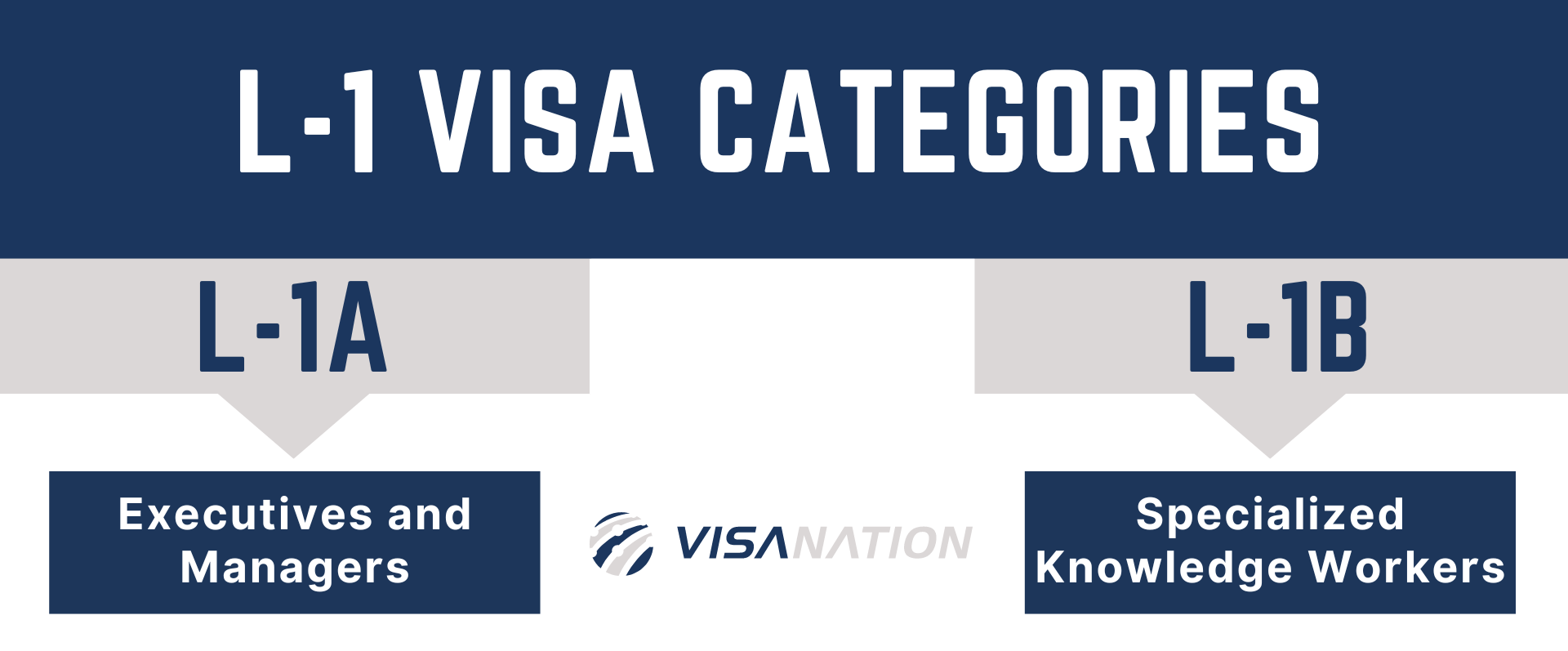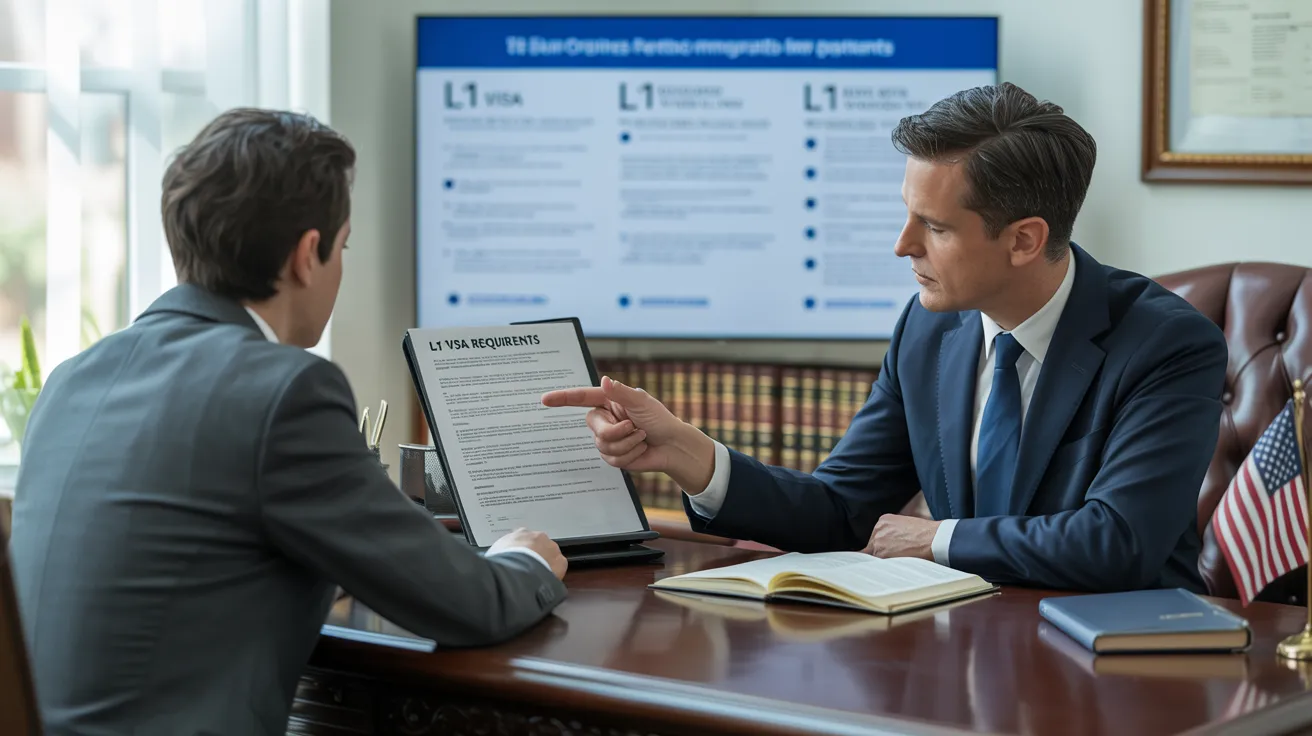Every little thing You Need to Understand About the L1 Visa: Advantages, Needs, and A lot more
The L1 Visa acts as a crucial device for international firms looking for to move workers to the United States, helping with both operational efficiency and the transfer of specialized expertise. With distinct classifications for executives and specialized specialists, this visa offers various advantages, including potential pathways to irreversible residency. However, understanding the eligibility demands and application procedure is important for an effective change. As we check out the ins and outs of the L1 Visa, it ends up being clear that maneuvering its complexities is extremely important for organizations aiming to take advantage of global skill successfully. What difficulties might you experience along the method?
Introduction of the L1 Visa

Kinds Of L1 Visas

Several kinds of L1 visas provide to the diverse requirements of multinational firms looking to move workers to the USA. The 2 main categories of L1 visas are L1A and L1B, each created for particular roles and responsibilities within an organization. L1 Visa.The L1A visa is intended for supervisors and execs. This group allows companies to transfer people that hold managerial or executive positions, enabling them to manage procedures in the U.S. This visa stands for a first period of up to three years, with the opportunity of expansions for an overall of as much as seven years. The L1A visa is particularly valuable for business looking for to establish a strong leadership presence in the U.S. market.On the various other hand, the L1B visa is designated for employees with specialized expertise. This includes people that possess advanced knowledge in specific locations, such as proprietary innovations or special processes within the business. The L1B visa is additionally valid for an initial three-year period, with extensions available for as much as 5 years. This visa category is perfect for companies that call for staff members with specialized skills to enhance their operations and maintain an one-upmanship in the U.S.Both L1A and L1B visas permit double intent, indicating that visa holders can request permanent residency while on the visa. Comprehending the differences in between these two classifications is vital for businesses preparing to navigate the complexities of worker transfers to the USA efficiently
Qualification Needs
To get an L1 visa, both the company and the employee should satisfy details qualification criteria set by U.S. immigration authorities. The L1 visa is developed for intra-company transferees, permitting multinational firms to move staff members to their united state offices.First, the company should be a certifying company, which means it needs to have a parent company, branch, subsidiary, or affiliate that is working both in the united state and in the foreign country. This connection is necessary for demonstrating that the employee is being moved within the exact same corporate framework. The company has to also have actually been doing organization for at the very least one year in both locations.Second, the staff member should have been utilized by the foreign business for at least one continuous year within the three years preceding the application. This work must be in a supervisory, executive, or specialized expertise ability. For L1A visas, which satisfy managers and executives, the employee should show that they will certainly proceed to operate in a comparable capacity in the U.S. For L1B visas, planned for staff members with specialized knowledge, the individual need to possess unique proficiency that contributes significantly to the business's operations.
Application Process
Navigating the application procedure for an L1 visa includes numerous important steps that must be completed precisely to ensure a successful result. The initial step is to determine the ideal category of the L1 visa: L1A for managers and executives, or L1B for workers with specialized expertise. This distinction is considerable, as it affects the documents required.Once the group is identified, the U.S. employer should file Form I-129, Petition for a Nonimmigrant Worker. This form must consist of comprehensive information concerning the business, the worker's function, and the nature of the work to be done in the U.S. Accompanying documentation commonly includes proof of the partnership between the U.S. and international entities, proof of the employee's qualifications, and information pertaining to the work offer.After entry, the united state Citizenship and Migration Services (USCIS) will assess the application. If authorized, the worker will certainly be notified, and they can then use for the visa at a united state consular office or consular office in their home nation. This entails completing Type DS-160, the Online Nonimmigrant copyright, and scheduling an interview.During the meeting, the candidate has to provide different records, including the authorized Type I-129, proof of employment, and any kind of additional sustaining evidence. Complying with the interview, if the visa is provided, the employee will obtain a visa stamp in their ticket, permitting them to enter the united state to work for the funding company. Correct preparation and comprehensive documentation are vital to maneuvering this procedure efficiently.
Advantages of the L1 Visa
One of the significant advantages of the L1 visa is its ability to facilitate the transfer of vital employees from international offices to the United States. This visa is specifically advantageous for international business looking for to keep consistency in procedures and management throughout boundaries. By enabling executives, managers, and specialized staff members to function in the U.S., organizations can ensure that their most necessary talent is available to drive service objectives.Another substantial advantage of the L1 visa is its relatively straightforward application procedure compared to various other work visas. Organizations can request for the L1 visa without the requirement for a labor accreditation, which simplifies the employment of international staff members. The visa can be given for a first period of up to three years, with the opportunity of expansions, promoting lasting assignments.The L1 visa also supplies a path to permanent residency. Staff members on L1A visas (for managers and executives) can look for an Eco-friendly Card after one year, accelerating their modification to long-term status. This feature is an eye-catching incentive for skilled individuals looking for stability in the U.S. workforce.Additionally, L1 visa holders can bring their instant member of the family to the united state under L2 condition, enabling spouses and youngsters to live and research in the country, boosting the overall allure of this visa classification. On the whole, the L1 visa functions as a necessary tool for worldwide services, cultivating cross-border collaboration and ability mobility.
Common Challenges
While the L1 visa offers numerous advantages for multinational business and their workers, it is not without its challenges. One significant difficulty is the rigorous documentation and qualification requirements enforced by the U.S. Citizenship and Immigration Services (USCIS) Firms should supply in-depth evidence of the foreign staff member's certifications, the nature of the business, and the certifying relationship in between the united state and foreign entities. This process can be time-consuming and might need legal competence to navigate successfully.Another difficulty is the possibility for scrutiny throughout the request procedure. USCIS officers may examine the legitimacy of the company procedures or the employee's role within the organization. This examination can bring about hold-ups or perhaps denials of the copyright, which can significantly affect the firm's operational strategies and the employee's occupation trajectory.Furthermore, the L1 visa is connected to the sponsoring employer, which suggests that work adjustments can make complex the visa standing. If an L1 visa owner wants to switch companies, they need to frequently go after a various visa category, which can include complexity to their immigration journey.Lastly, keeping compliance with L1 visa guidelines is essential. Employers have to ensure that their employee's role aligns with the preliminary application which the company continues to fulfill the eligibility requirements. Failing to do so can cause retraction of the visa, influencing both the worker and the company. These obstacles necessitate complete preparation and ongoing administration to ensure an effective L1 visa experience.
Tips for Success
To efficiently navigate the L1 visa process, thorough preparation is important. Beginning by thoroughly understanding the certain requirements for the L1 visa group you are applying for, whether L1A for supervisors and execs or L1B for staff members with specialized knowledge. Collect all required paperwork early while doing so, including evidence of your employment background, business framework, and the nature of business operations.Engage lawful advise experienced in immigration law to direct you via the details of the application. A lawyer can help ensure that your application is full, exact, and engaging. They can also aid in planning for possible requests for proof (RFEs) by proactively attending to areas that might increase questions.Additionally, preserve clear interaction with your employer, who should offer crucial support for your application. L1 Visa Qualifications. Validate that they recognize their responsibilities, consisting of submitting the required applications and giving documents that validates your duty in the organization.Prepare for the visa meeting by exercising response to typical concerns regarding your specialist background and the nature of your employment. Showing confidence and quality can substantially influence the result of your application
Regularly Asked Questions
Can Household Members Accompany L1 Visa Owners?
Yes, member of the family can go along with L1 visa owners. Partners and unmarried children under 21 years of ages are qualified for L2 visas, which allow them to live and research in the United States during the L1 holder's keep.
The Length Of Time Can L1 Visa Owners Remain In the U.S.?
L1 visa owners can originally remain in the U.S. for up to 3 years (L1 Visa). This period might be expanded, enabling an optimum stay of seven years for L1A visa holders and five years for L1B visa holders
Is the L1 Visa a Twin Intent Visa?

Can L1 Visa Holders Use for a Permit?
Yes, L1 visa owners can get a permit - L1 Visa Lawyer. The L1 visa sustains dual intent, enabling owners to seek permanent residency while keeping their non-immigrant condition, facilitating a smoother transition to an environment-friendly card
What Happens if an L1 copyright Is Refuted?
If an click here L1 copyright is refuted, the candidate might receive a notice laying out the factors for rejection. L1 Visa. They can appeal the choice, reapply, or check out alternative visa options depending on their scenarios and certifications
Conclusion
In recap, the L1 Visa works as an important tool for international firms looking for to transfer workers to the United States. Recognizing the distinctions between L1A and L1B categories, together with the qualification requirements and application processes, is essential for effective navigation of this non-immigrant classification. The benefits offered, consisting of structured applications and paths to permanent residency, better improve its allure. Dealing with typical challenges efficiently can result in a more beneficial result in the copyright process.